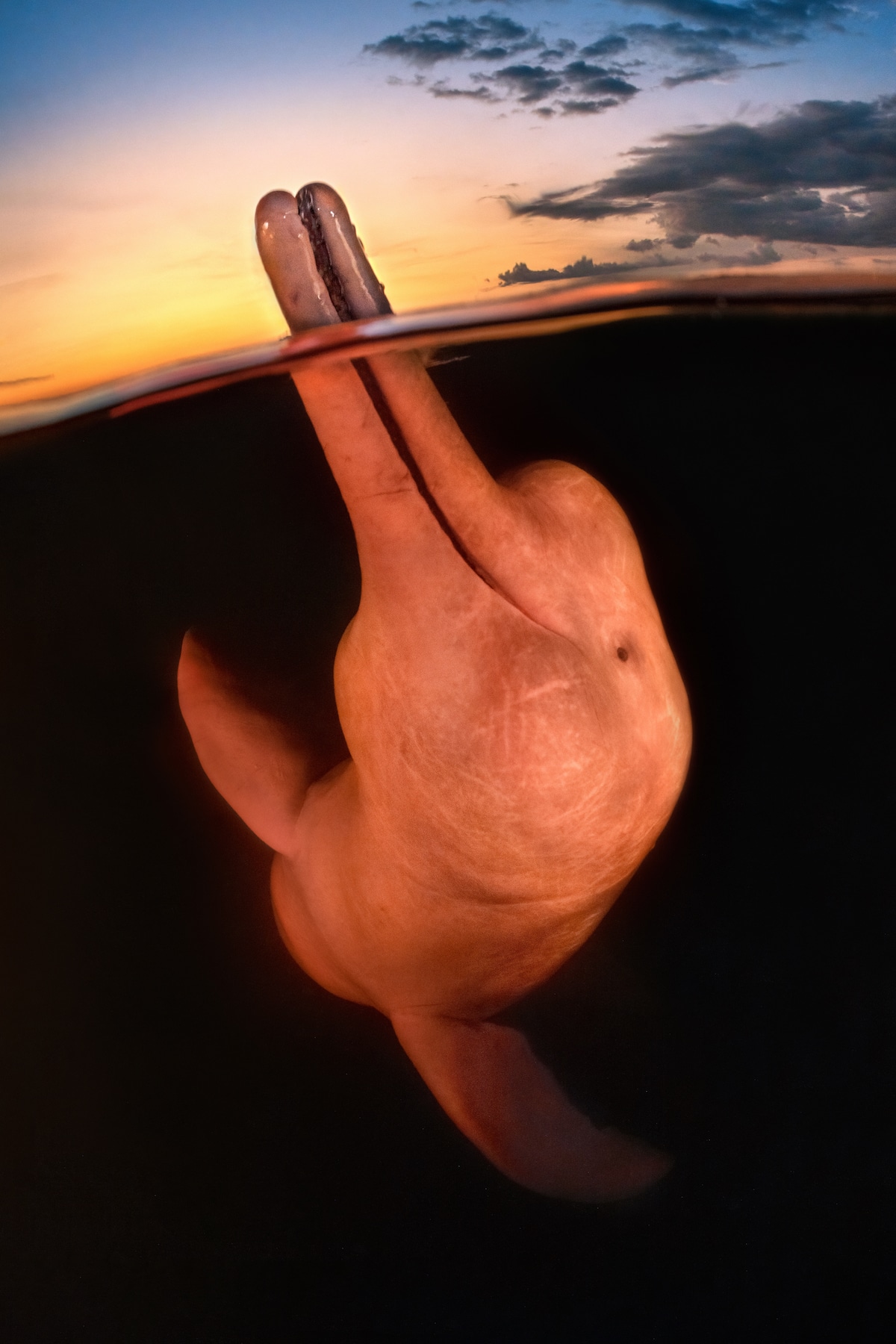
“Boto Encantado” by Kat Zhou/UPY 2023 (USA). Underwater Photographer of the Year 2023. Up & Coming Underwater Photographer of the Year 2023.
Location: Brazilian Amazon
“There’s a legend among locals in the Amazon that river dolphins, or “botos”, can transform into handsome men known as “boto encantado” at night to seduce women. Though I did not witness this elusive boto transformation, at dusk I was enchanted by these beautiful mammals in a different way. After seeing how botos would sometimes bring their beaks above water, I knew I want a split shot at sunset. Though the water was so dark that I was shooting blind, this dolphin gave me a perfect pose and smile!
As indigenous communities settled by rivers in the Amazon, river dolphins began living in closer proximity to human populations, even making use of food scraps. Frequent dolphin sightings led to tales like boto encantado, but there’s a darker side to the legend, as it was often used to excuse pregnancies after women were assaulted or forced into prostitution. While botos are generally revered as mythical creatures, many scorned husbands have killed dolphins because of these stories. Furthermore, many river dolphins have also been killed for use as fish bait. Though there have been bans on this practice, it has not been eradicated. With this, alongside even bigger impacts like mercury poisoning due to the gold mining industry and large development projects that have disrupted the river ecosystems, I fear that one day botos will truly become no more than mythical creatures.”
The Underwater Photographer of the Year contest provides a glimpse of the extraordinary beauty that resides under the sea—and this year was no exception. This prestigious contest garnered more entries than ever, with photographers from 72 different countries submitting 6,000 photos. In the end, it was an image of an endangered river dolphin that earned American photographer Kat Zhou the title of 2023 Underwater Photographer of the Year.
Zhou’s over-and-under view of the Amazon river dolphin is a rare delight. These animals, which were placed on the IUCN’s Endangered List in 2019, are slowly disappearing as more people settle along Brazil’s Amazon River. This brings the animals in closer contact with humans and, unfortunately, the results are not positive.
“In dark, tannic waters, Kat has created a striking composition capturing this rarely photographed and endangered species in a precision composition,” shared judging chair Alex Mustard. “This is by far the best image we’ve ever seen of this species, whose numbers are declining at an alarming rate.”
Zhou’s victory lap included being named Up & Coming Underwater Photographer of the Year, as well as the overall winner. The double win is a sure sign that the California-based photographer is one to watch.
While incredible wildlife dominated many categories, Brett Eldridge took home a prize for photographing a decidedly different subject. His discovery of a single-engine World War II airplane and his subsequent imaging is a fascinating look at what happens when manmade items are left to decay. Eldridge’s image isn’t just for artistic purposes, as Mustard reminds us. There is also a deeply scientific motive behind this type of photogrammetry modeling.
“Underwater photogrammetry, that creates a three-dimensional panorama of the subject is a recent technique in underwater photography that has proved incredibly useful for studying reefs and wrecks. Allowing academics to study in detail measure and visualized the underwater world, without going down there. Yet Brett’s image also reveals how eye-catching these images can be, rewriting the rules of wreck photography underwater, and providing the world with its first view of this crashed World War II fighter.”
Learn more of the stories behind the winning images below and check out all of the finalists on the Underwater Photographer of the Year winner’s gallery.
Check out the incredible winners of the 2023 Underwater Photographer of the Year contest.
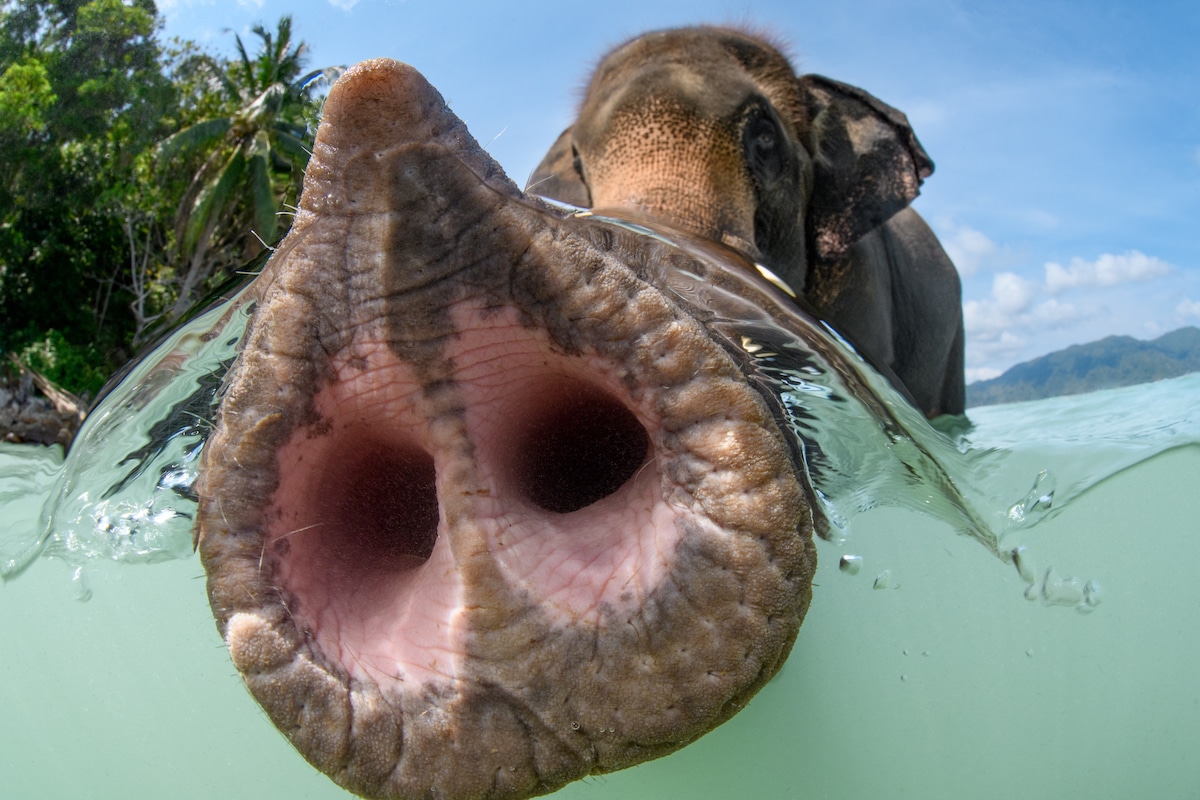
“The Trunk” by Suliman Alatiqi/UPY 2023 (Kuwait). Winner, Portrait.
Location: Phuket, Thailand
“The elephant’s trunk is one of the most distinctive anatomical features in the natural world and this photo aims to emphasize it. Luckily, he was curious about my camera and was happy to feel it out which gave me the opportunity to capture this perspective despite otherwise bad conditions for an over-under photo (choppy water and poor visibility). In my first attempts, the nostrils were not fully lit because of how close they were to the lens (which was necessary for the intended photographic effect). So I returned at a specific time window when I thought the sun’s angle would be optimal and managed to fully light the nostrils. This added a lot more detail to the key part of the image without which the photo would not be as effective.”
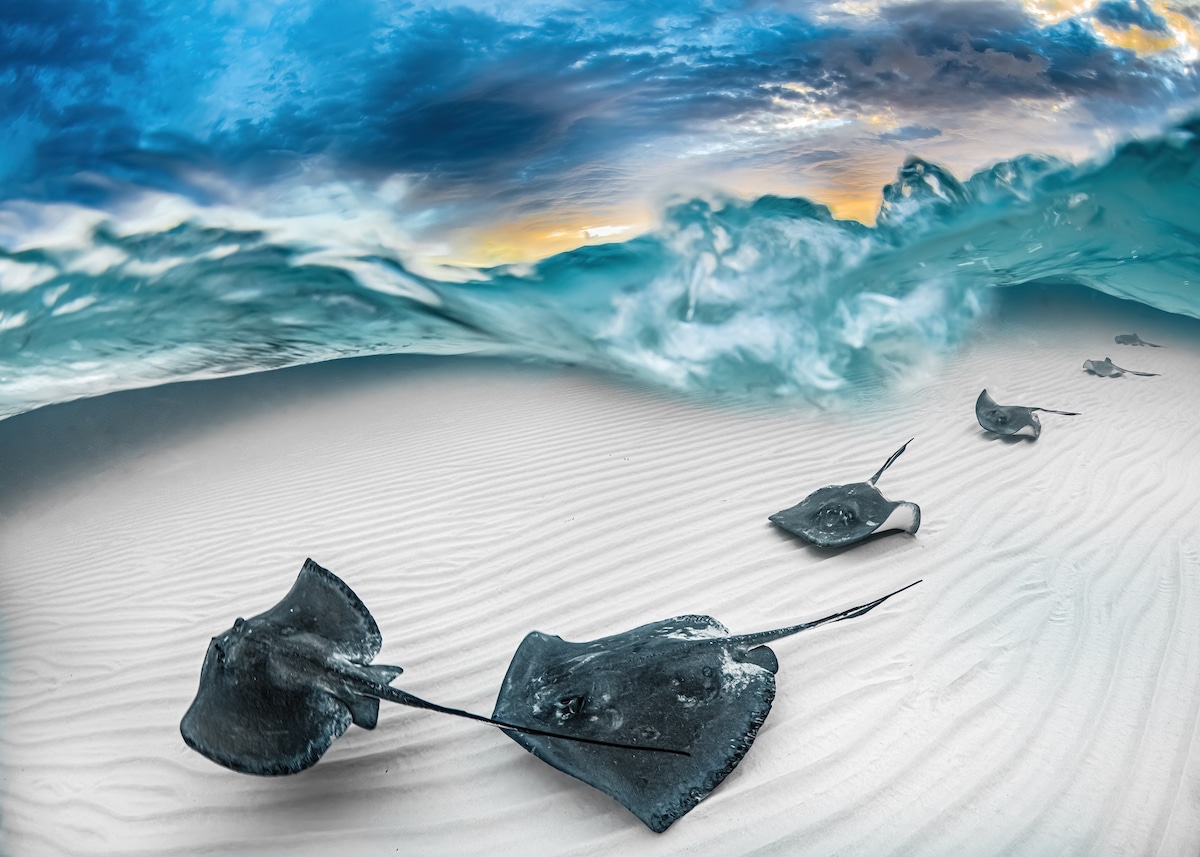
“Fade” by J. Gregory Sherman/UPY 2023 (USA). Winner, Wide Angle
Location: Stingray City, Cayman Islands
“My dive partner and I chartered a boat to arrive at Stingray City on Grand Cayman before dawn so as to capture the morning light and undisturbed sand ripples. Just as the sun broke the horizon, a line of southern stingrays headed straight for me and I captured this image as they glided across the sand. Using a large dome port allowed me to create a split image showing the intensely colorful dawn sky contrasted against the nearly monochromatic stingrays and sand beneath the surface chop.”
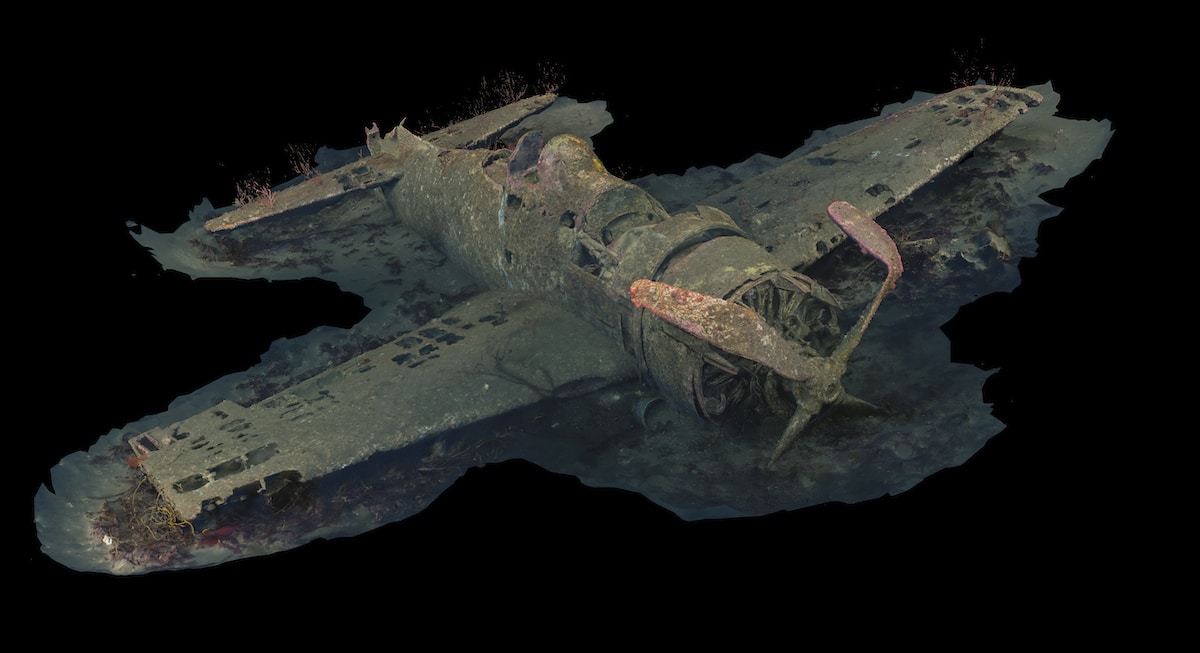
“Engine with a Saddle” by Brett Eldridge/UPY 2023 (United States). Winner, Wrecks
Location: Point Loma, California
“We were out scanning targets in June when we saw a very small, but promising sonar blip 230 feet deep. I geared up and jumped in hoping for something special. After some searching, my heart started racing when I first saw fish then the propeller of an almost completely intact, single-engine WW II airplane! It turned out to be a F8F-1 Bearcat, a rare aircraft that Neil Armstrong famously once said was his favorite and has been described as “An Engine With a Saddle.” Alone on the first dive with limited bottom time, I took enough photos to build a “draft” model and identify the wreck. Needing a better photogrammetry model for the UPY contest and with deadlines quickly approaching, I booked December 19th and crossed my fingers. We fortunately had epic conditions and I got the photos I needed. It was my last dive of 2022.”
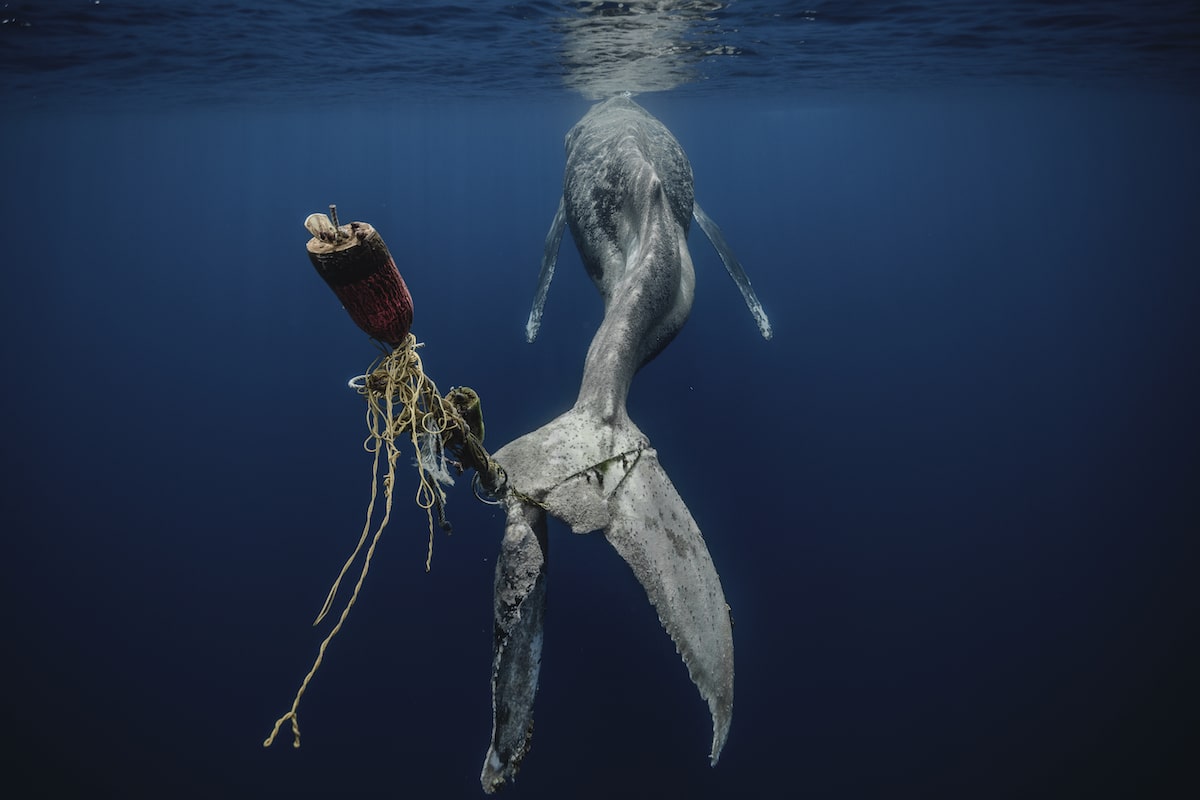
“Hopeless” by Alvaro Herrero/UPY 2023 (Spain). Save Our Seas Foundation Marine Conservation Photographer of the Year 2023. Winner, Marine Conservation.
Location: Baja California, Mexico
“A humpback whale dies a slow, painful and agonizing death after having its tail entangled in a ropes and buoys, rendering its tail completely useless. A reflection of what not only our oceans are suffering, but also our planet, the product of man’s selfishness and lack of responsibility. Taking this photograph was, for me, the saddest moment I’ve experienced in the ocean. Especially because I have spent so much time with humpbacks underwater, experiencing eye contact, interactions, and seeing with my own eyes how they are sentient and intelligent beings. But I’m “happy” to being able to capture that moment and show the world what is happening, what we are doing. I really hope this image make us aware , open our eyes and drive us in to make real changes.”

“El Blanco – The White One” by Don Silcock/UPY 2023 (Australia). Winner, Black & White.
Location: Península Valdés, Argentina
“The image was taken on the last morning of a five-day trip to Peninsula Valdés in Argentina, in August 2022, under a special permit to enter the water with the Southern Right Whales that gather there between June and December each year.
The mother, who can be seen in the background, accepted our presence and allowed the calf to interact with us. It was very playful but careful not to hit us with it’s tail and seemed to be really enjoying it all – almost as much as we were!
White calves are very rare and referred to locally as “El Blanco” or the white one!
Peninsula Valdés is an incredibly important safe haven and breeding ground for the Southern Right Whales of the southern Atlantic and Argentina has done an excellent job of managing it.
It was, without doubt, my best ever underwater experience!”
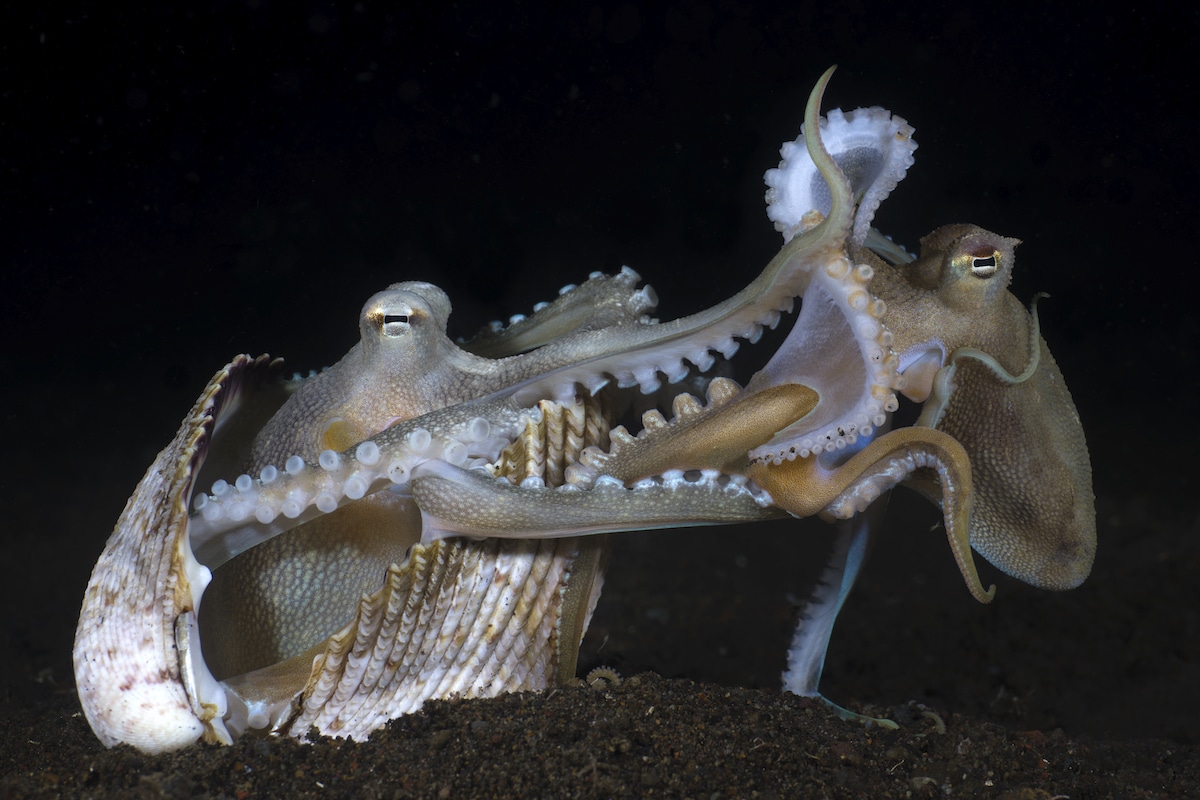
“Make Love Not War” by Yury Ivanov/UPY 2023 (Indonesia). Winner, Behavior.
Location: Tulamben, Bali
“A couple of coconut octopuses “making love” (mating). I knew that I can find this species of Octopus at one of dive sites near Tulamben village (Bali, Indonesia) and they are active only at night time in that place. I dive there only after 7pm hoping to photograph something unique – their mating. I`ve done more than 30 night dives at the dive site and finally I got lucky. The photo shows the end of their love.”
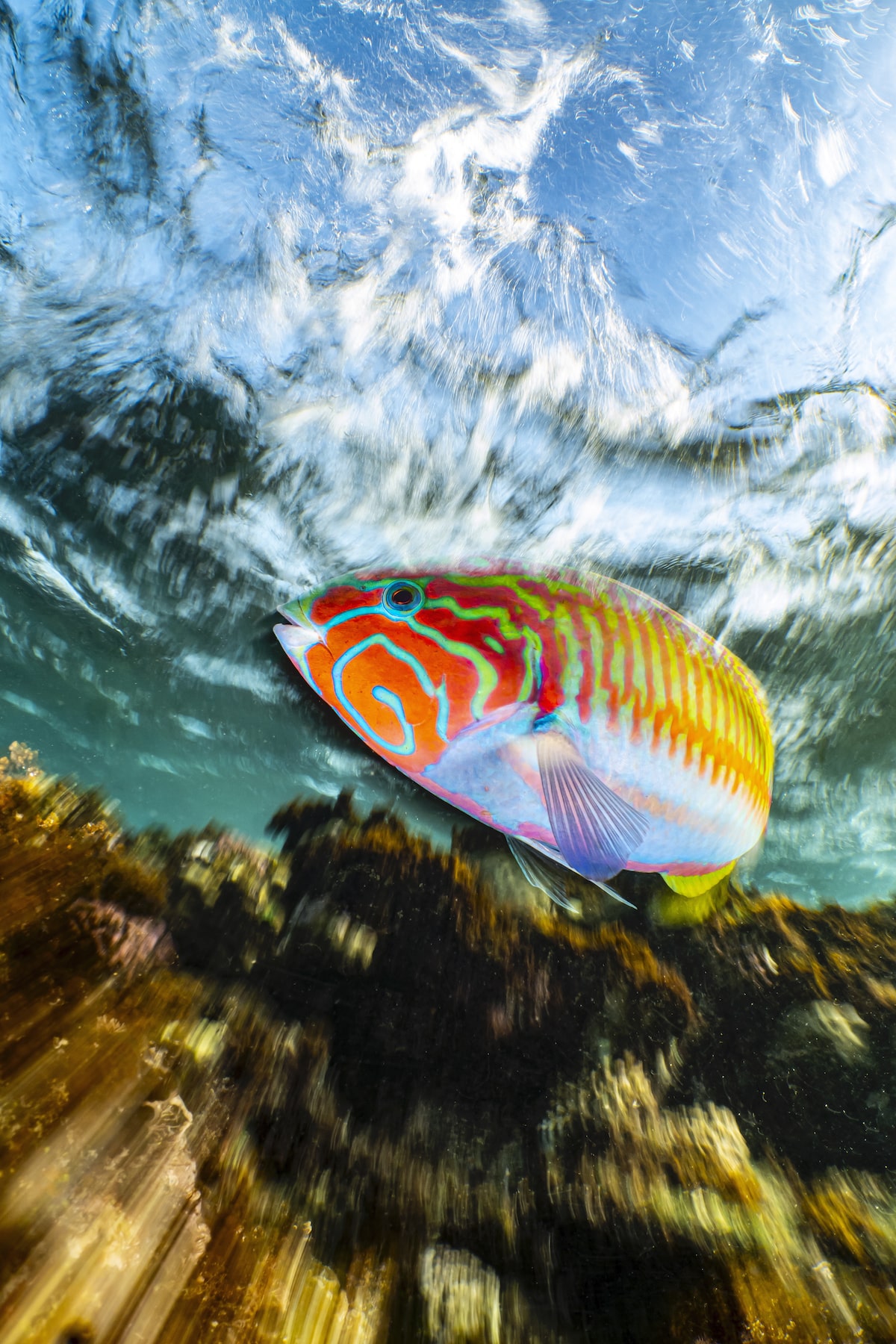
“Klunzinger’s Wrasse In Motion” by Enrico Somogyi/UPY 2023 (Germany). Winner, Compact.
Location: Marsa Alam, Egypt
“When I was snorkeling in Marsa Alam I saw countless Klunzinger’s Wrasses. One of them was particularly curious and very interested in my lens. I was able to take some good classic wide angle pictures. After a while I figured it would be a good idea to try a long exposure. So I set my camera to the smallest aperture f11, the ISO value to 64 and the exposure time to 1/13s. For this picture, I moved the camera forward a bit while the shutter was released. This created the zoom effect in the lower part of the image. I was very happy with the result.”
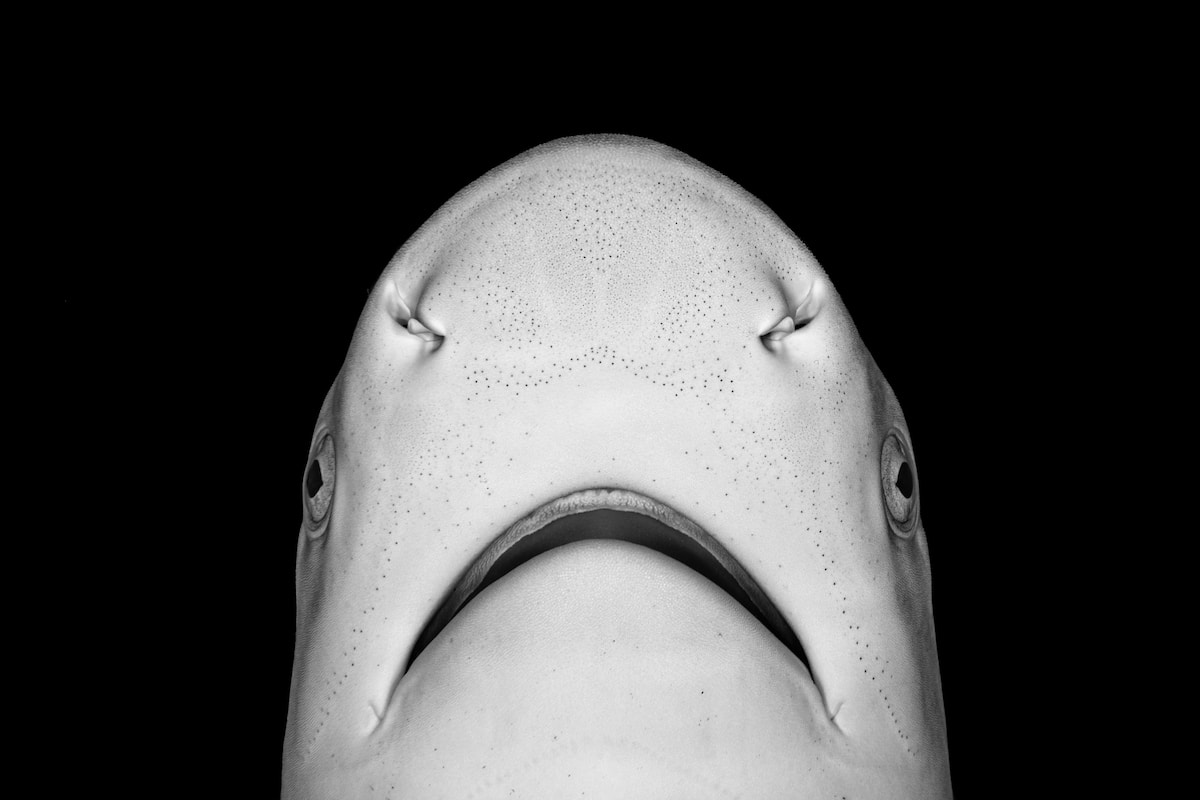
“Jaws Reborn” by Victor Huertas/UPY 2023 (Australia). Runner Up, Black and White.
Location: Mo’orea, French Polynesia
“I wanted to achieve two goals with this image of a newborn blacktip reef shark. First, I aimed to recreate the iconic poster image of Jaws with a much less intimidating and more accurate portrayal of a shark. Secondly, I wanted to display the array of tiny dots with sensitive organs called ampullae of Lorenzini with which sharks can detect electric fields such as those produced by their prey. I hope that this image elicits both fascination and respect for sharks and contributes to inspire people to want to learn more about these interesting animals. This image was taken at the Centre des Recherches Insulaires et Observatoire de l’Environnement (CRIOBE) station in Mo’orea, French Polynesia, where the Physioshark research team studies the impact of climate change on sharks.”

“Curiosity Among Icebergs” by Rafael Fernandez Caballero/UPY 2023 (Spain). Runner Up, Portrait.
Location: Antarctic Peninsula
“For me, the leopard seal is the most special and epic predator on the planet. It can as big as 4 meters long, it has a reptilian face and the infamy of being curious and dangerous. Although, it is can be dangerous, there are incredible stories of interaction such as those of Paul Nicklen, to whom a female brought several penguins in an attempt to teach him how to hunt. As with any wild animal, respect and care must be maximum and with this species these really have to be on another level. Working with experts and following these principles, we finally had an amazing encounter with the big female leopard seal that played with us and was really curious.”
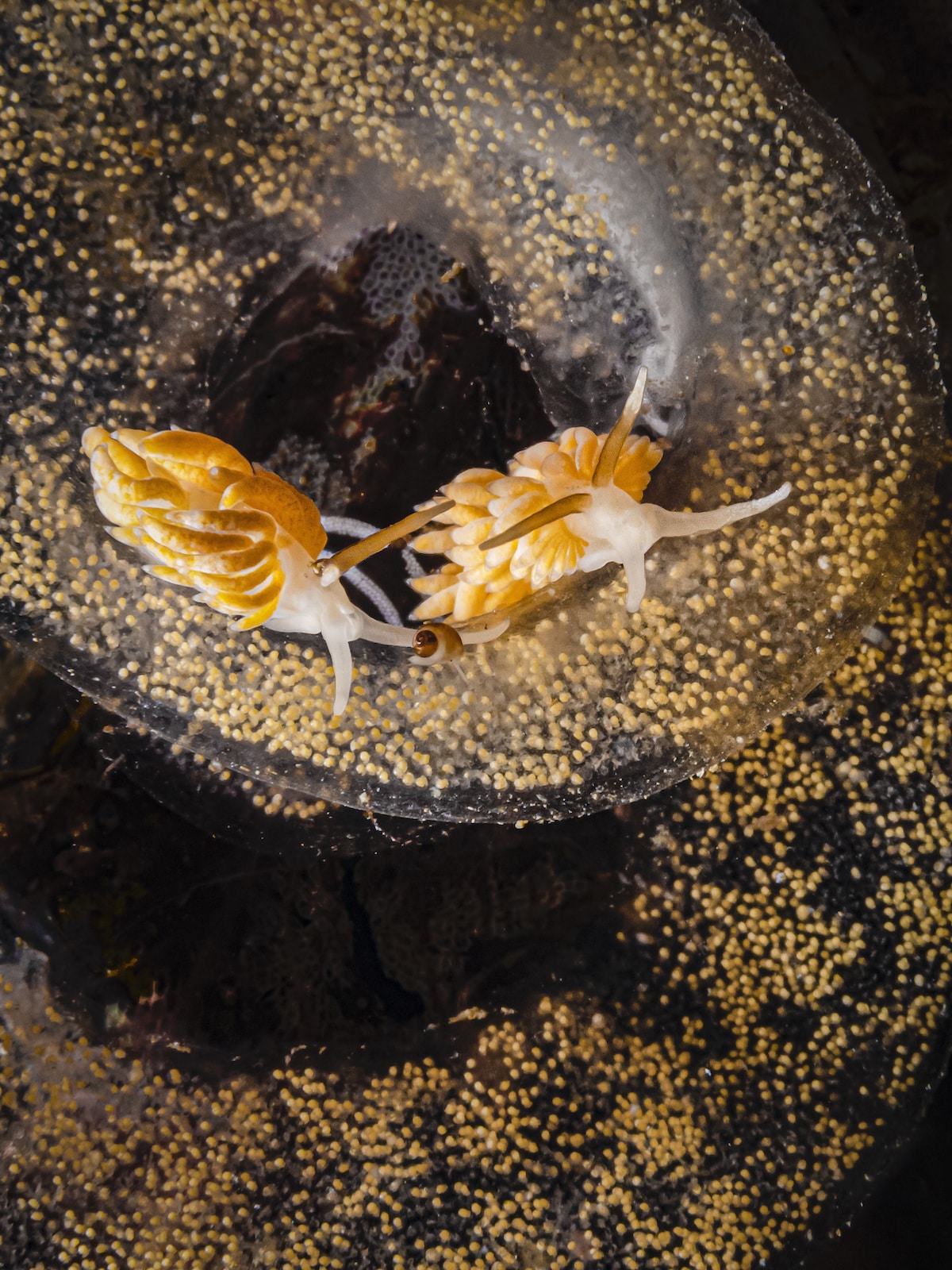
“Egg Eaters” by Kirsty Andrews/UPY 2023 (UK). Winner, British Waters Macro.
Location: Shetland, Scotland
“I have long admired others’ pictures of nudibranchs feeding on the egg coils of other nudibranch species across the world. I’d also seen this nudibranch species, Favorinus branchialis, before, and I knew that it fed in this way, but never seen it in action until recently. I was therefore thrilled to find three large specimens feeding on a big coil of eggs in Shetland, Scotland. The eggs were several inches across, in a wide spiral, so the challenge was to isolate an appealing composition of eggs and nudibranchs.”
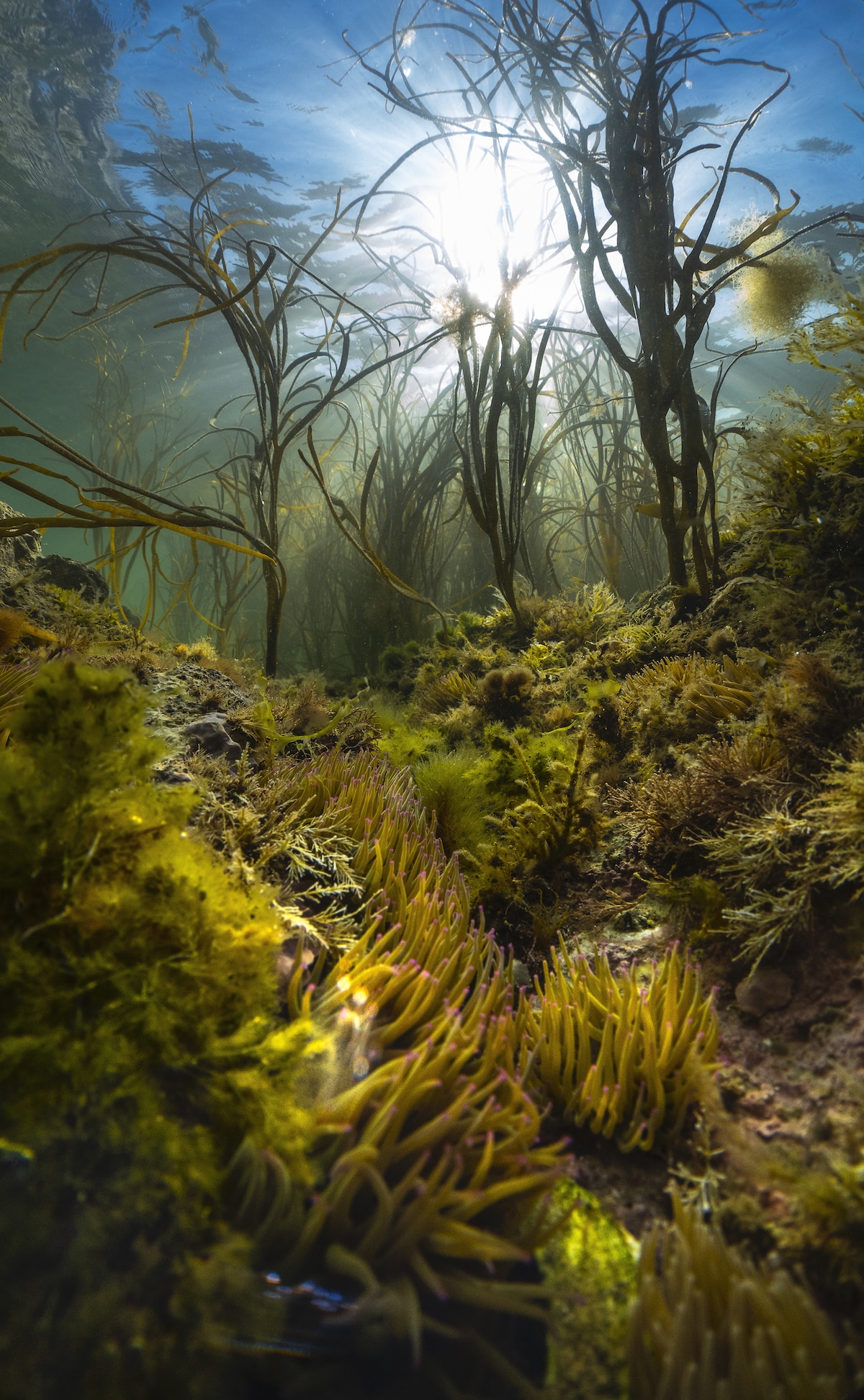
“An Island’s Wild Seas” by Theo Vickers/UPY 2023 (UK). Most Promising British Underwater Photographer 2023. Winner, British Waters Wide Angle.
Location: Needles Marine Conservation Zone, Isle of Wight
“Sunlight beats down through a marine jungle of Himanthalia algae on the chalk reefs of the Needles Marine Conservation Zone. The purple-tipped tentacles of snakelocks anemones (Anemonia viridis) rising up from the forest floor. Striking rock formations, the Needles on the Isle of Wight attracts close to 500,000 visitors annually. Yet, like many of Britain’s marine habitats the beauty and biodiversity of the island’s chalk reefs that lie below, from nudibranchs and rays to cuttlefish and cuckoo wrasse, are largely unknown to most. Exploring the shallower reefs on a summer evening, my mission was to capture a wide angle image that documented this stunning local habitat, combining both the towering forests above and the anemones that rule the chalk seabed below. After several unsatisfying attempts I stumbled upon this gully packed with snakelocks, and sinking into the forest beneath, found the composition I had been seeking.”
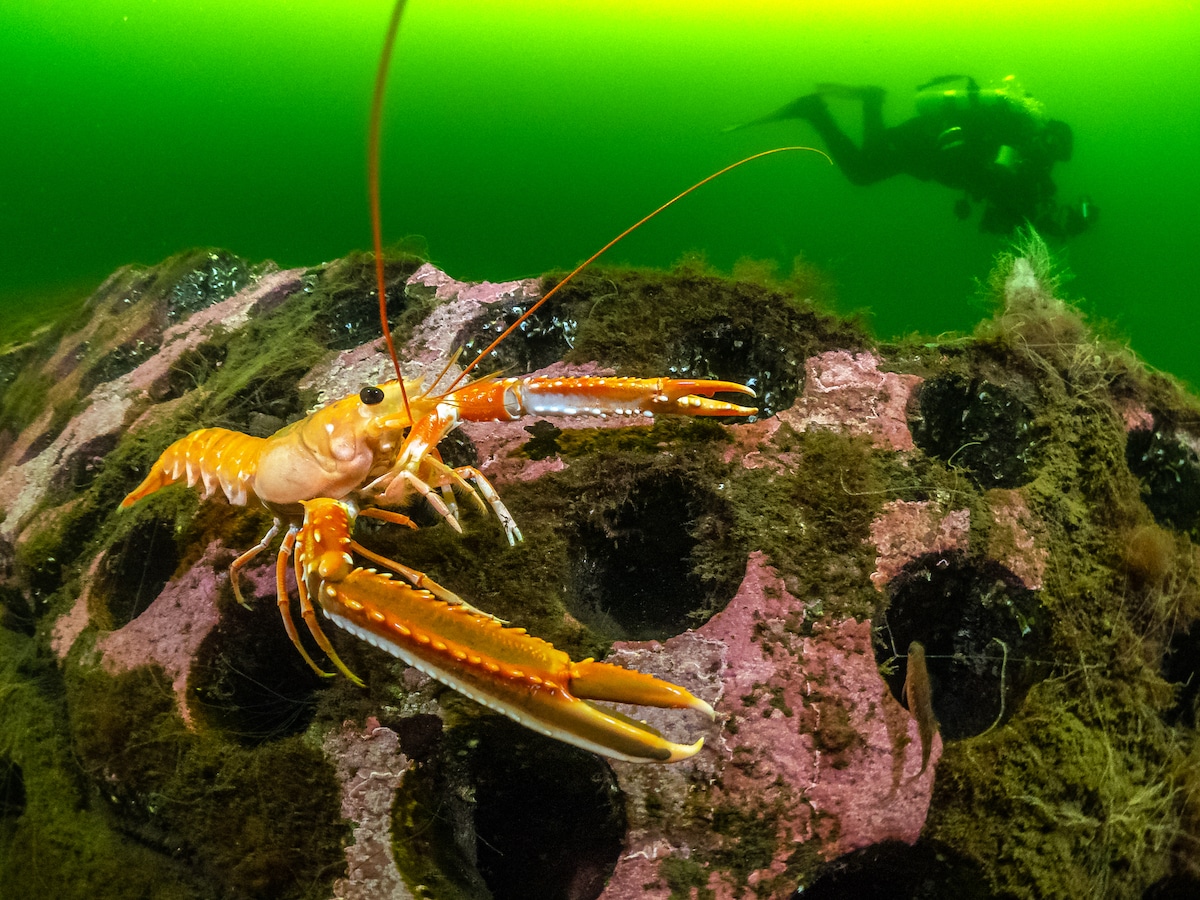
“Pipe Reef” by Dan Bolt/UPY 2023 (UK). Winner, British Waters Living Together.
Location: Loch Fyne, Western Scotland
“We were initially interested in this site in Loch Fyne for the fields of Firework Anemones, but of equal interest was an old pipe that had this patterned concrete protective covering along its length. This shallow artificial reef was home to many different species, including some large Langoustines (Nephrops norvegicus) who were seemingly unperturbed by my presence.”
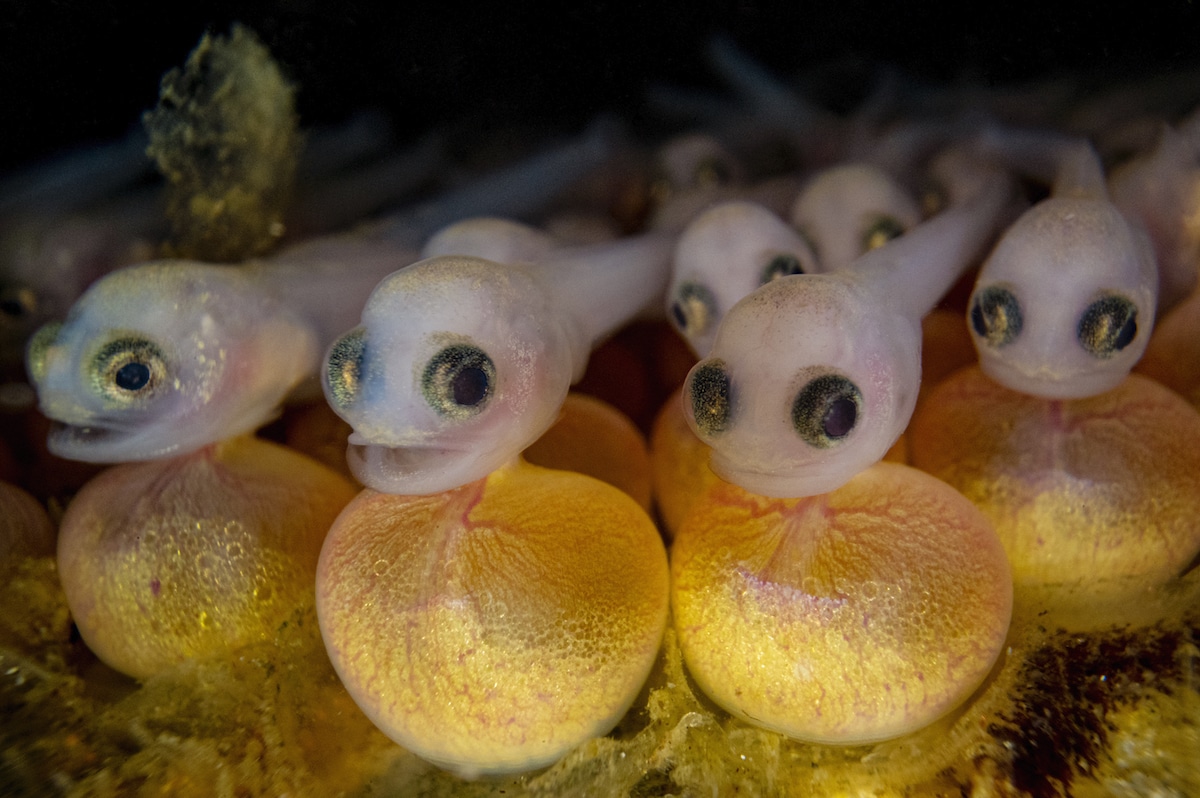
“Unsung” by Shane Gross/UPY 2023 (Canada). Winner, Macro
Location: Vancouver Island, Canada
“Walking along a rocky shoreline we would peer under rocks using a probe lens and my camera’s LCD screen to check for plainfin midshipman nests. Once found I would lay on top of the barnacle-covered rocks, cutting my elbows, trying to compose images of fish most people have never heard of despite having one of the most interesting lifecycles of any animal. Plainfin midshipman are deep water fish that travel to the intertidal zone to spawn. The males sing to attract females and she will lay as many eggs as his singing deserves before moving on to the next singer. Now, the male has a chance to fertilize the eggs, but only if he is not beaten to the punch by a sneaker male who looks like a female. The singer male will then guard the nest never knowing the kids may not be his. Drama!”

“Crack Rock Blenny” by Tony Reed/UPY 2023 (UK). Winner, British Waters Compact.
Location: Babbacombe, England
“I had been going back to this spot on Crack rock to capture the variable Blenny for several weeks. He was caring over his eggs inside the crevice so I was trying to capture the point when the eggs were hatching. Being such an inquisitive little chap he was always moving around getting closer to the camera until he got to this point where I took a few shots. I didn’t stay too long as I didn’t want to have any negative or detrimental affects on the parenting behavior. It has been great to see an increase in the Variable Blenny around Torbay over the past couple of years.”
